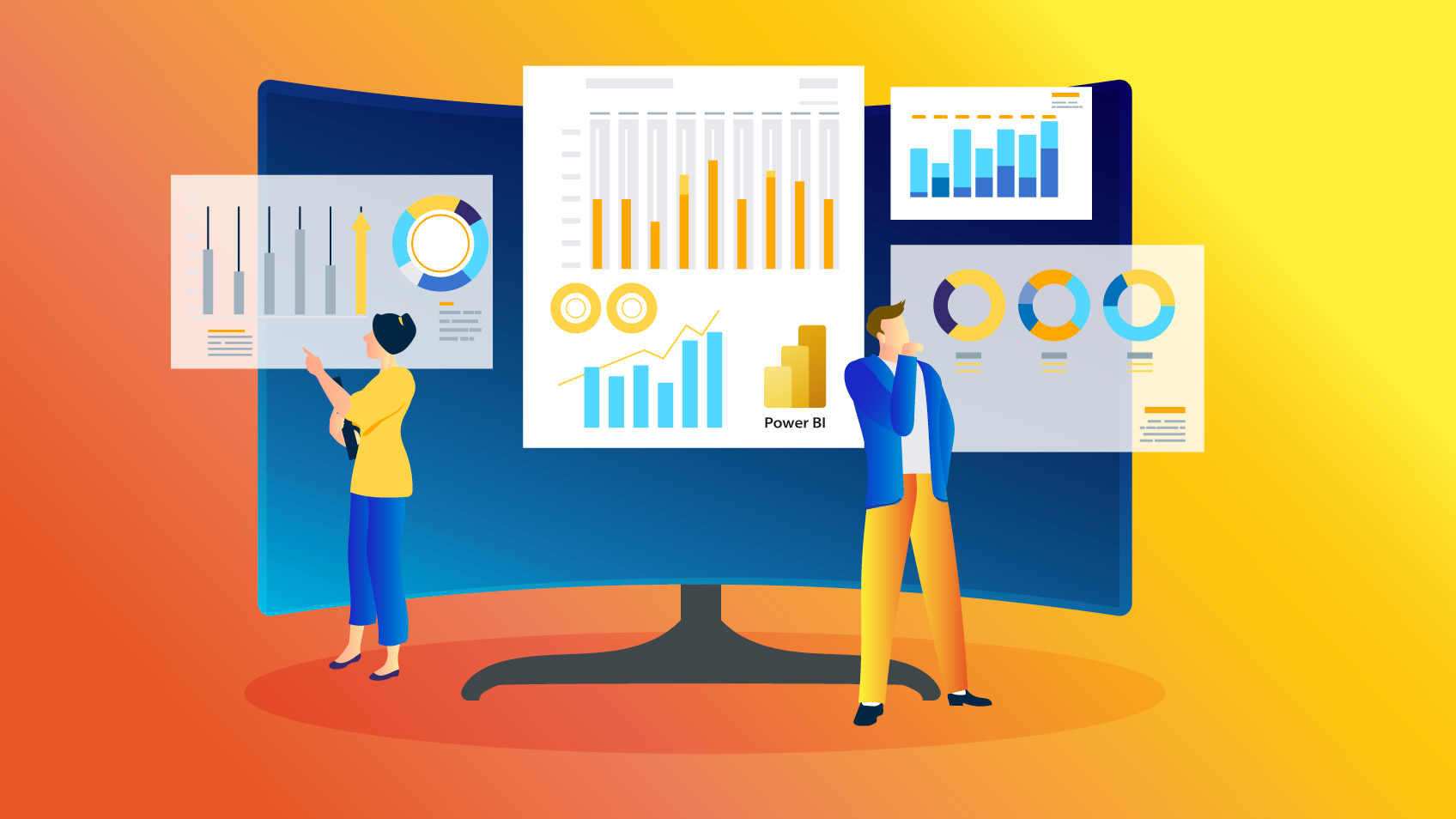Data is an asset that has become a vital aspect of business. It can be utilized to either make or break a company. Power BI, Microsoft Fabric and other powerful tools are employed by companies to maximize the potential of their data. These platforms are the backbone of business intelligence, and when they are combined with Azure Data Factory, they can be a force that is unstoppable in data analysis and decision-making.
Power BI – Your Business Intelligence Companion
Power BI, which is a product of Microsoft, is a complete business intelligence tool that is designed to help businesses visualize and share their insights from data. Power BI users can create interactive reports and dashboards, transforming raw data into useful insight.

Power BI is scalable to fit your business needs. Power BI integrates seamlessly across different data sources, making it simple to combine data from multiple systems and databases. The user-friendly drag-and-drop interface enables even non-technical users to design meaningful reports.
Power BI’s platform allows for instantaneous data processing. This guarantees that you are always working with the most current data. Power BI provides a variety of visualisations that allow you to present data in a fun and digestible manner. Collaboration and sharing of reports with colleagues enhances decision-making and creates a data-driven business culture within your organization.
Microsoft Fabric: The weaving of data Excel
Microsoft Fabric is a fundamental framework which integrates and orchestrates data from various Microsoft services. Fabric is the layer which transforms your data into an easily accessible and usable entity. This lets businesses get insights fast.
Microsoft Fabric is the foundation of the integrity of data and its consistency as companies deal with ever-increasing amounts of data. Microsoft Fabric integrates with a wide range of services ranging from Azure Data Lake Storage, Azure SQL Data warehouse to Power BI. This interconnectedness allows data to flow easily and allow insights to be derived from multiple sources.
The versatility of Microsoft Fabric is particularly evident in its data transformation capabilities. You can use it to organize data, cleanse and make it ready for analysis and ensure that it complies with the policies of your data governance organization. Microsoft Fabric is the software that makes sure your data is safe and accurate. It is also is ready for analysis.
Azure Data Factory: The Gateway to Data Transformation
Azure Data Factory is another essential component in the modern business intelligence landscape. It’s a cloud data integration tool that lets you design, schedule and manage workflows that are based on data. Azure Data Factory provides meaningful insight through the orchestration of the movement of data and its transformation.
Azure Data Factory’s flexibility in connecting to different sources of data is one of its key advantages. Your data can be integrated effortlessly, whether on-premises, cloud-based or both. It will provide you with a comprehensive view of your entire data environment, regardless of where your data is. The platform can handle batch processing as well as real-time data streams as well as analytics based on big data, making it a good fit to a range of scenarios.
Azure Data Factory provides a visual interface for the process of designing data pipes. It is easy to create and manage data workflows, even when you’re not a coding expert. This lets business users be in control of their data integration workflows and opens the door to self-service data preparation.
Power BI, Microsoft Fabric and Azure Data Factory: The Power Trio
If Power BI, Microsoft Fabric, and Azure Data Factory come together and form a powerful trio that can completely transform your data analytics efforts. How do they work together?
1. Data Integration Azure Data Factory connects to an array of data sources, guaranteeing that all your data is accessible. This data integration capability feeds Microsoft Fabric which orchestrates data across a variety of services. This will ensure that the data you have properly structured, cleaned, and ready to be analyzed in Power BI.
2. Data Transformation: Microsoft Fabric plays a essential part in the process of data transformation by allowing you to modify your data to meet your requirements for analytical analysis. Fabric is an effective instrument for data transformation, data cleansing and data wrangling.
3. Data Visualization: Once your data is perfect and ready to go, Power BI takes over. It allows you to build visually appealing dashboards and reports that make complex data easier to comprehend. It allows you to use these insights to inspire your team to make data-driven decisions.
4. Scalability: Azure Data Factory is flexible enough to handle increasing amounts of data. Power BI combined with Microsoft Fabric can provide reliable data as your company grows.
5. Real-time Insights: Using real-time data processing capabilities, Power BI and Azure Data Factory offer up-to-date information that are vital to make quick and informed decisions.
Conclusion
The world of business intelligence is rapidly changing and organizations need to harness the power of data to stay competitive. Power BI combined with Microsoft Fabric and Azure Data Factory can take your business analytics to a new level. The three tools will allow you to produce stunning visuals, ensure consistent data quality, and simplify your workflows for data. Make the most of data through business intelligence.
